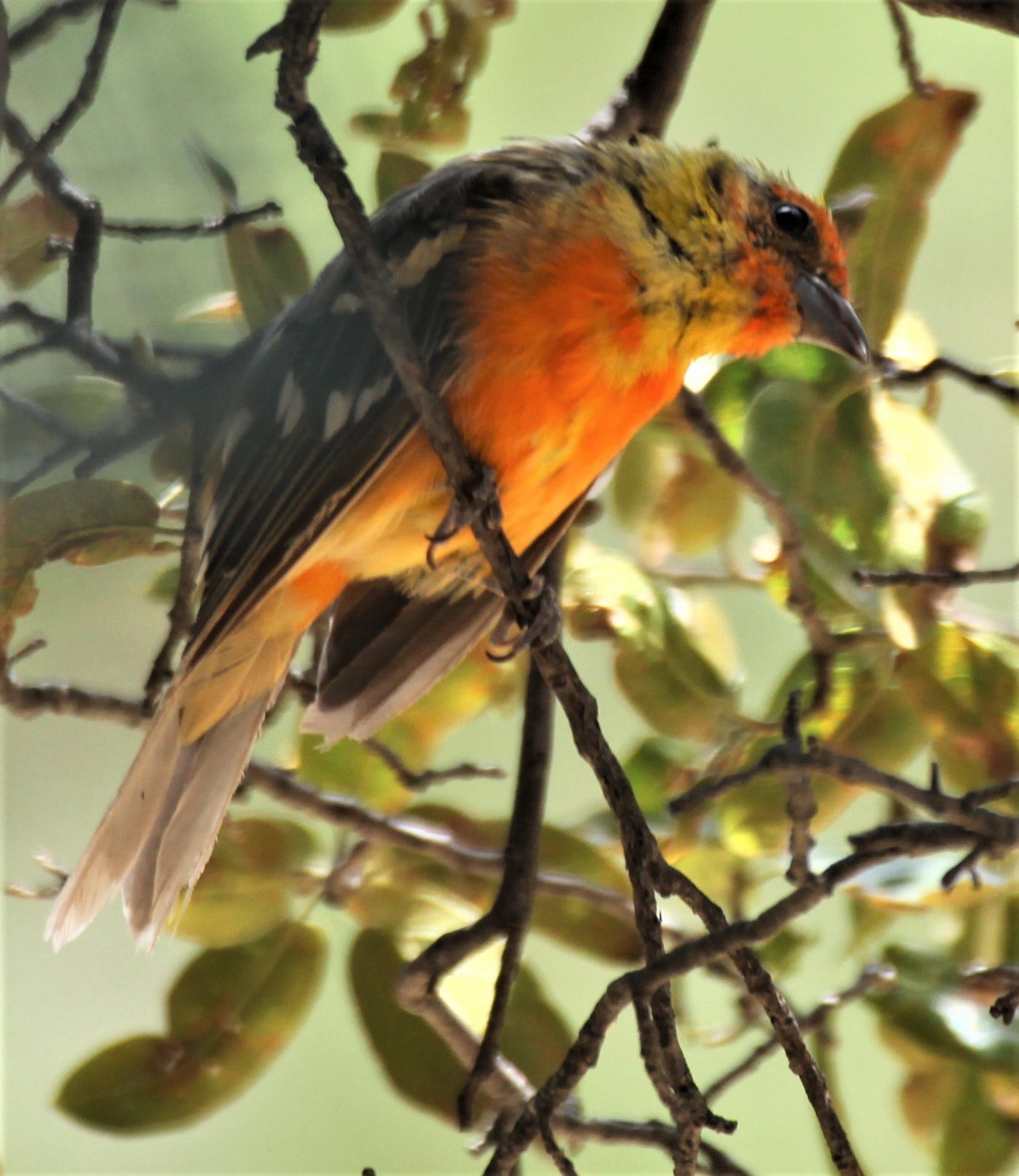
August 16, 2023
This morning before dawn the hummingbirds are angry with me. They whirl around the empty glass bottles and my head as if it’s my fault and not the night-foraging bat’s. It’s not like I don’t cater to their need by spending my days dissolving sugar in water and filling the feeders every few hours. Who says pigs can’t fly.
When I finally take my seat, the wing song of one hummingbird catches my attention. Rufous? The buffy-flanked bird flares its tail on the clothesline, and I snap a few pictures. It’s that time of year. I’ll take dozens of photos of hummingbird tails hoping to get a few in focus and with all ten feathers spread out just so.
When I look at my Merlin Sound ID app, it says “Allen’s Hummingbird.” Not rufous. If confirmed by my photos and the Great Birding Powers, the Allen’s will be the 13th hummingbird species in the yard for the year. A new record.
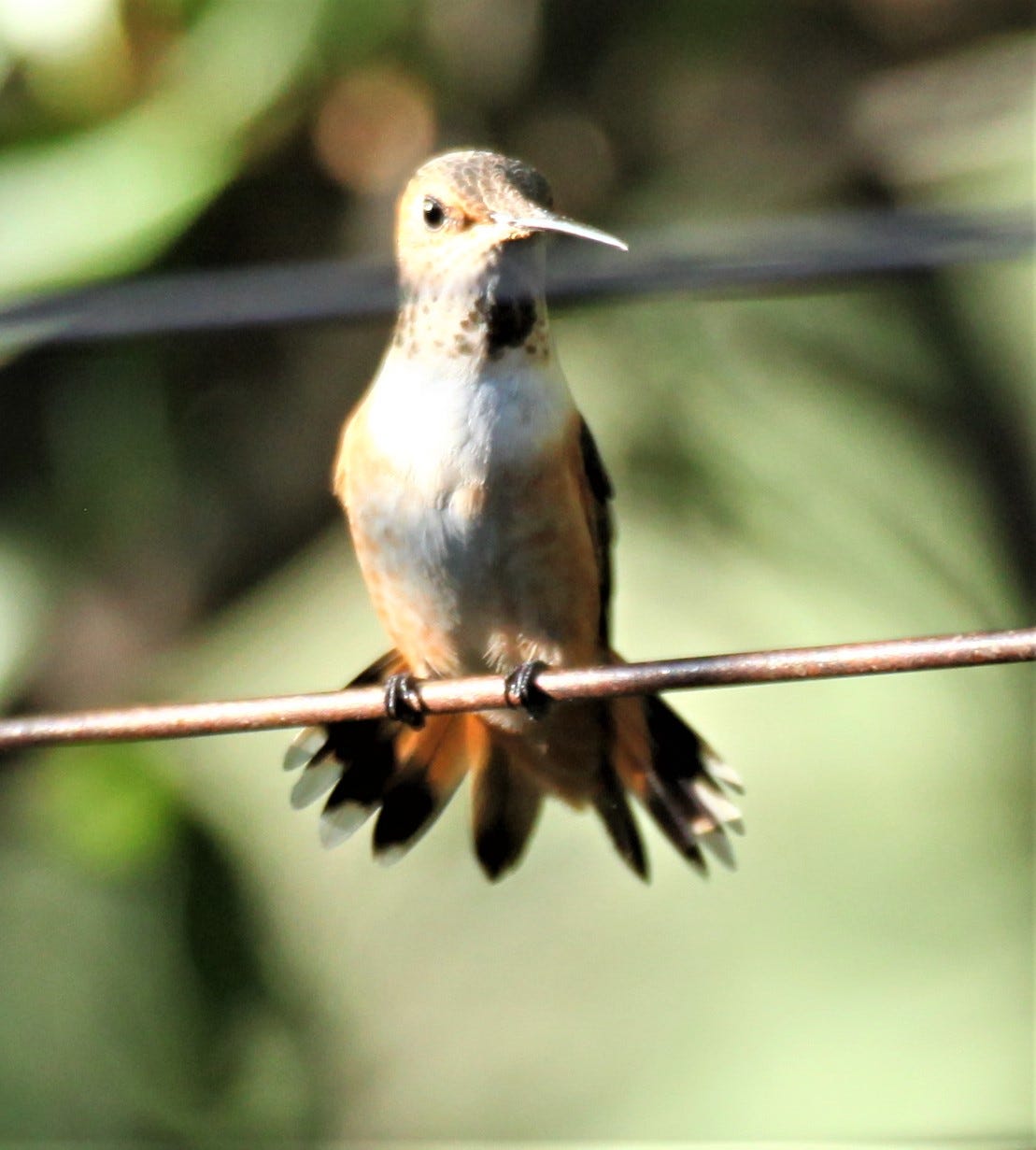
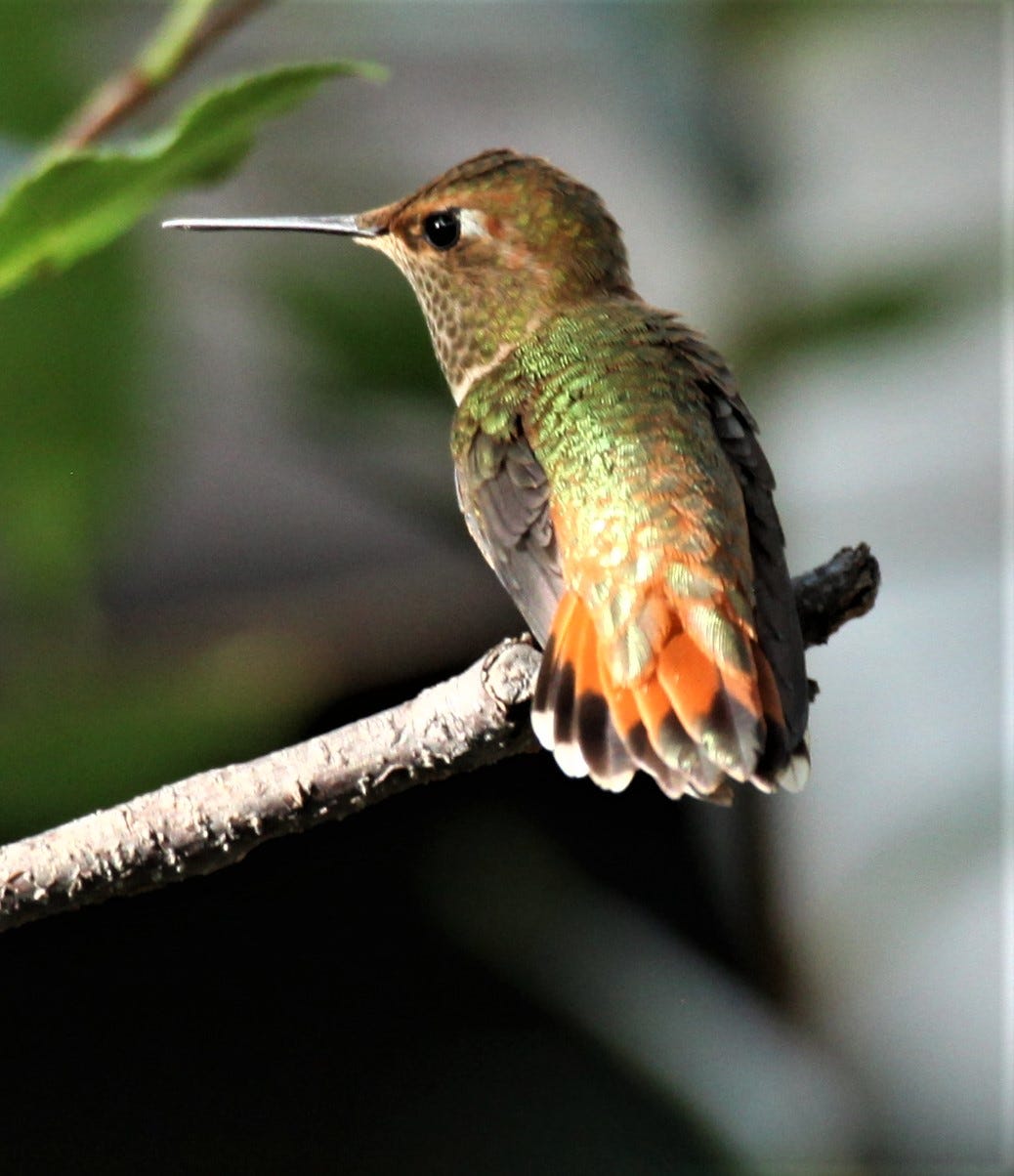
This was what I thought I would write about today. This, or maybe the 1 AM wakeup to screaming chickens and the darling spotted skunk attempting to swallow an egg. (The Wife said she didn’t know what the fuss was about. The skunk wasn’t much bigger than the egg.) Or maybe I’d write about the bear in the neighborhood, overturning rocks to snuffle out grubs and tearing down hummingbird feeders to lick up the sweetness. Or maybe the nectar-feeding bats using their tongues a bit more proficiently but to essentially the same effect.
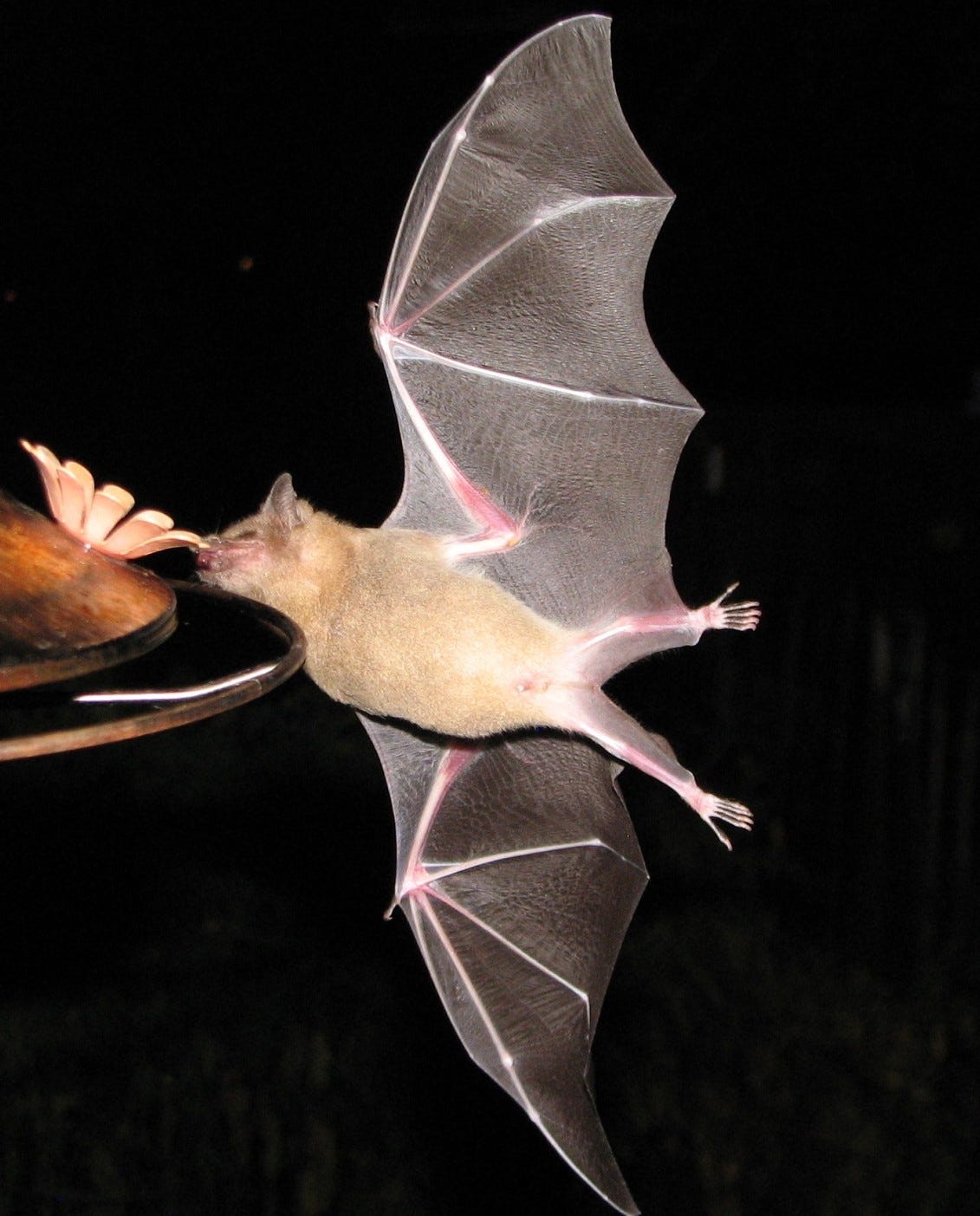
But then, as I changed out of my clothes and sat down at the desk to write, a splash of bright and splotchy orange and yellow in the oak tree outside the window drew my attention. A molting summer tanager? Not with those black wings and brown cheek patches. Western tanager? Too much beak. I grabbed my camera and began shooting through the window. Definitely a tanager, but I’d never seen one the color of flame like this here before.
Flame-colored tanagers are an elusive, tropical species ranging from southern Sonora to Panama where they favor shaded mountain canyons with evergreen oaks and pines. The first one recorded north of Mexico was a male from Arizona’s Chiricahua Mountains in 1985. Then, beginning in 1992, individuals and pairs began appearing in the Santa Rita and Huachuca mountains. Most years, the tanagers arrive in mid-April to start courtship and nesting, sometimes pairing with western and hepatic tanagers and raising hybrid offspring.
Mine, however, based on my 41 photos and Internet search for comparisons, has all the markings of an immature male flame-colored tanager.
A new yard bird, #175, and the first flame-colored tanager in the Mule Mountains.
So, today’s post isn’t about hummingbirds or bats or bears. Robert Burns must have had a distracting window like mine above his writing desk when he penned the words “The best laid schemes o' mice an' men/Gang aft a-gley.”
Thanks for subscribing! More to come from the Big Yard outside my window!



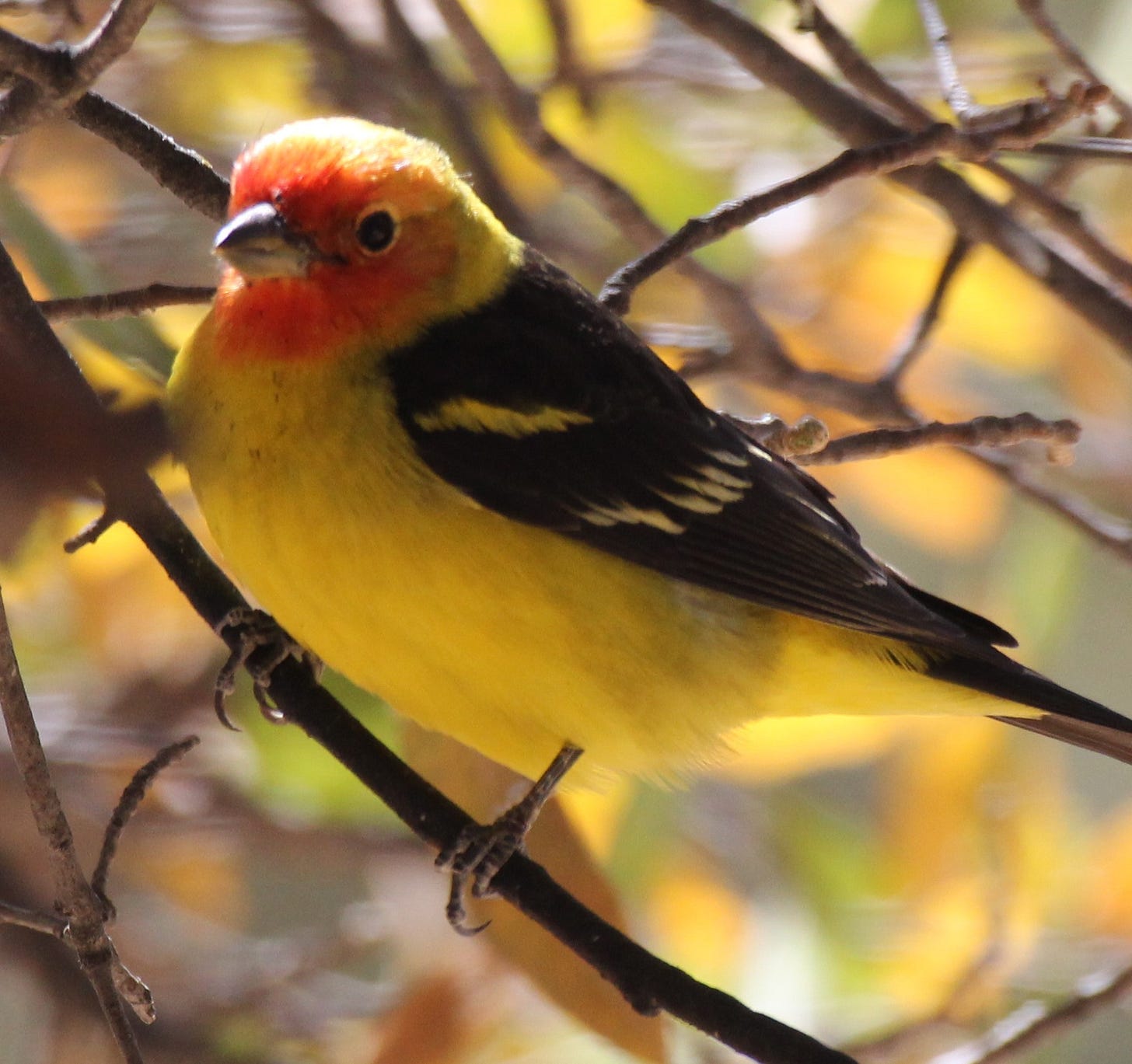
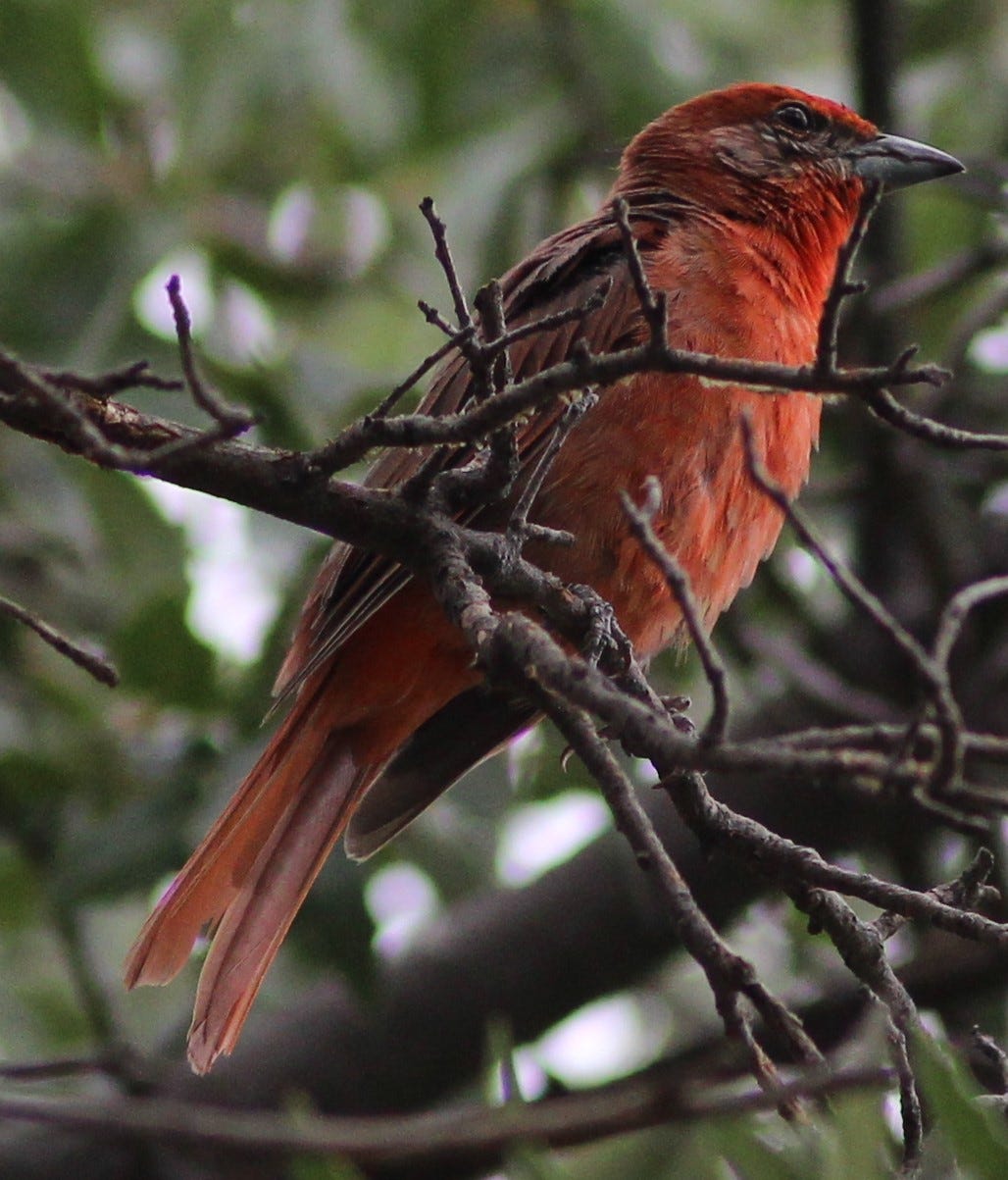
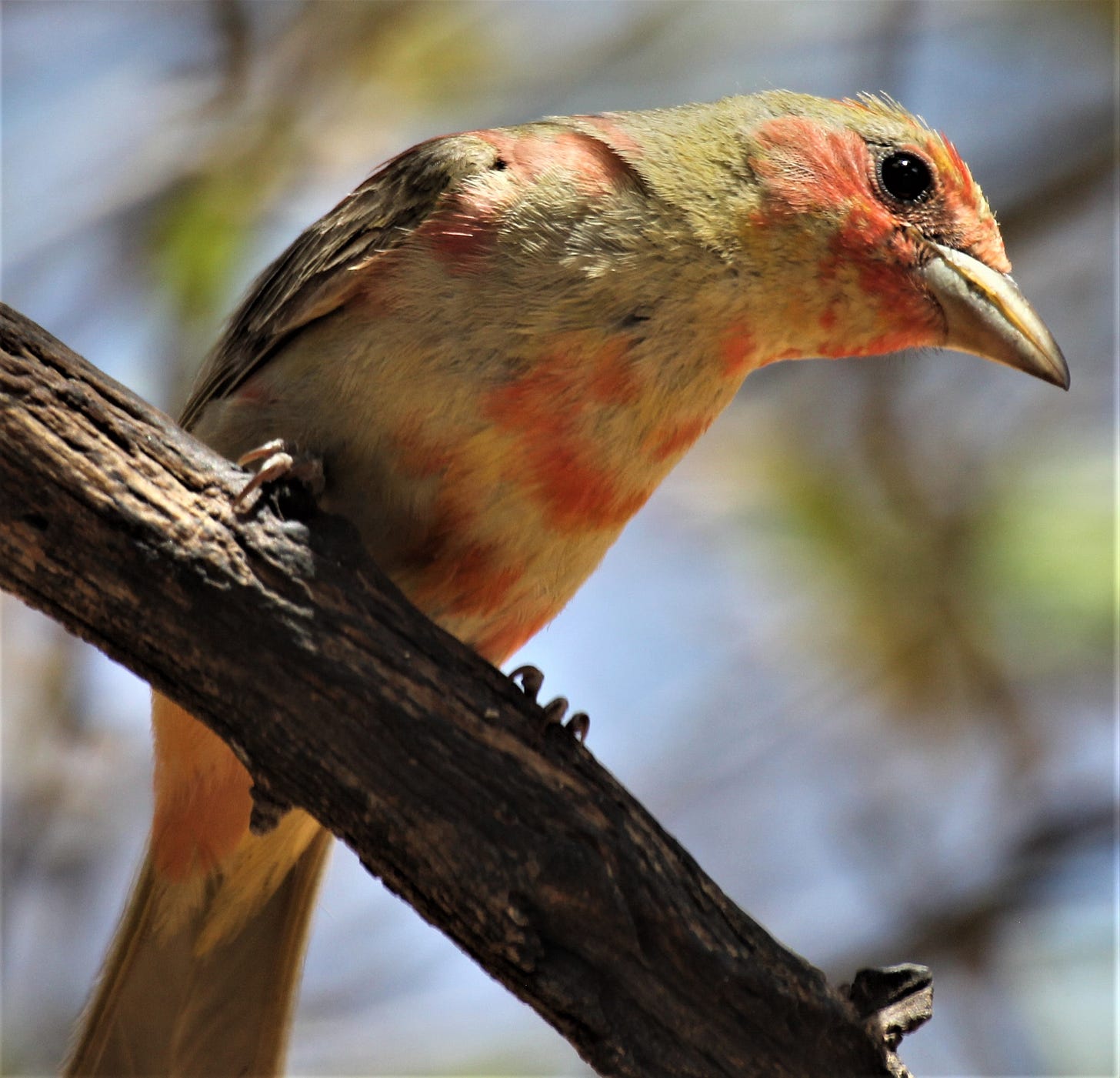
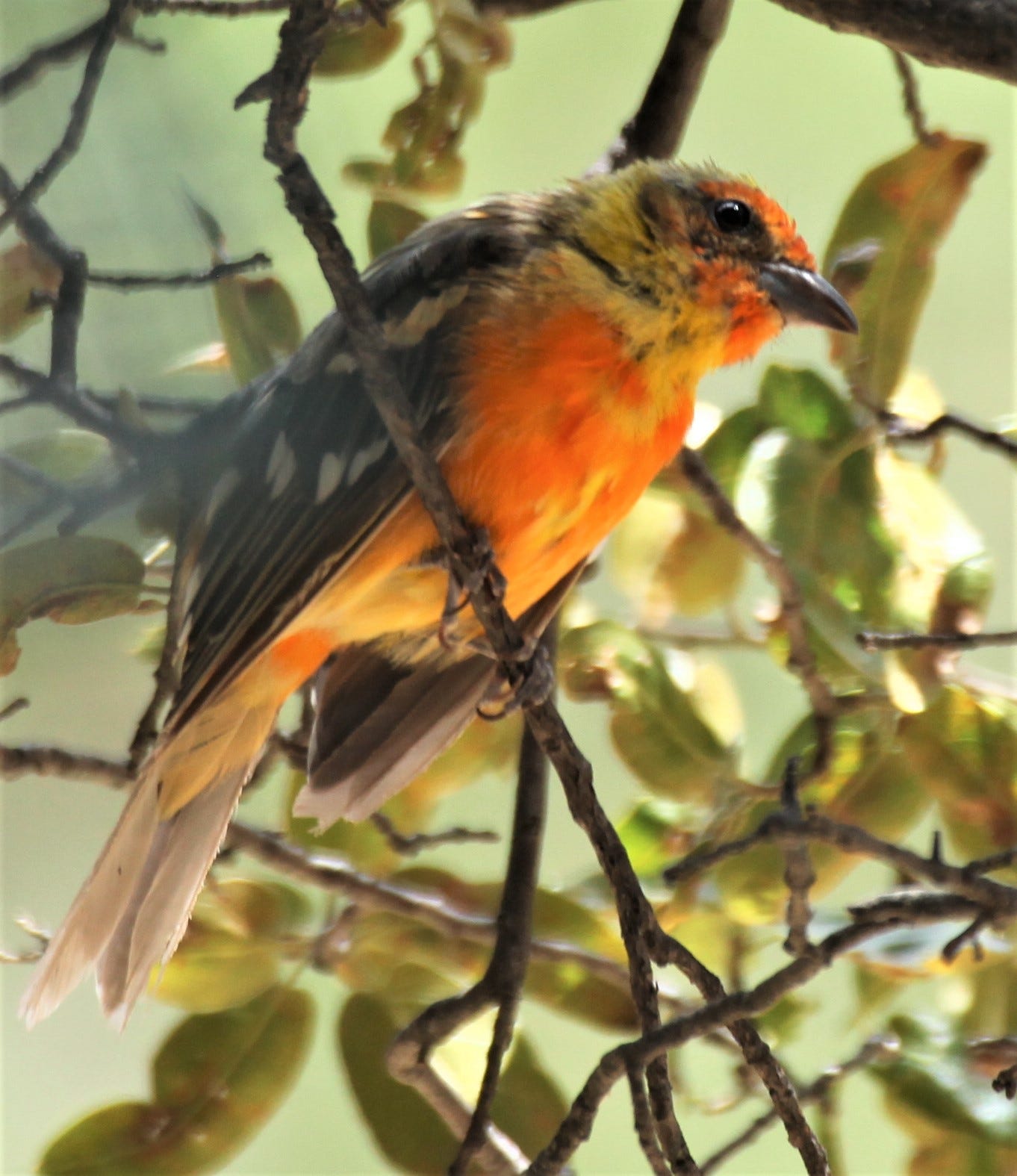
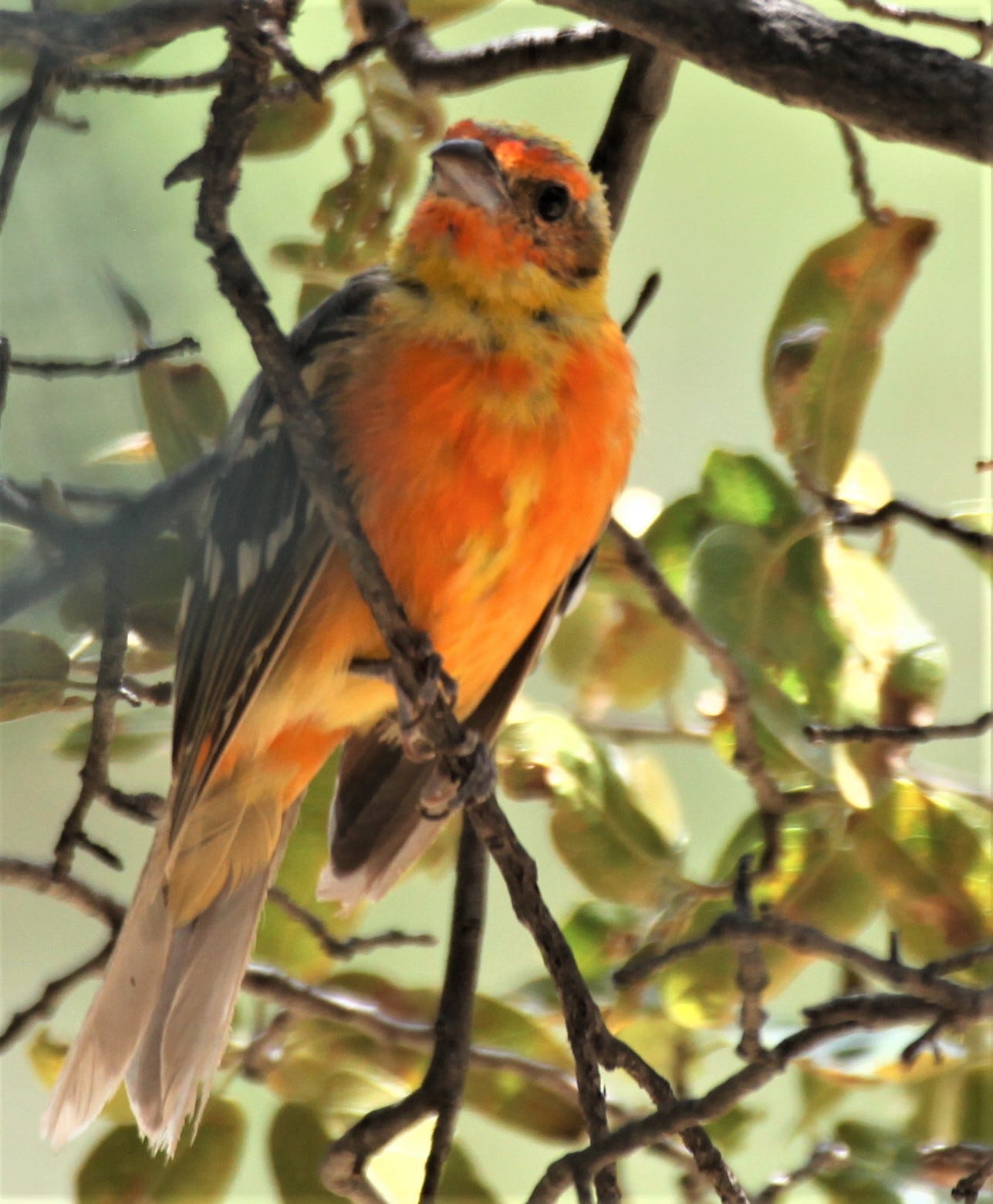
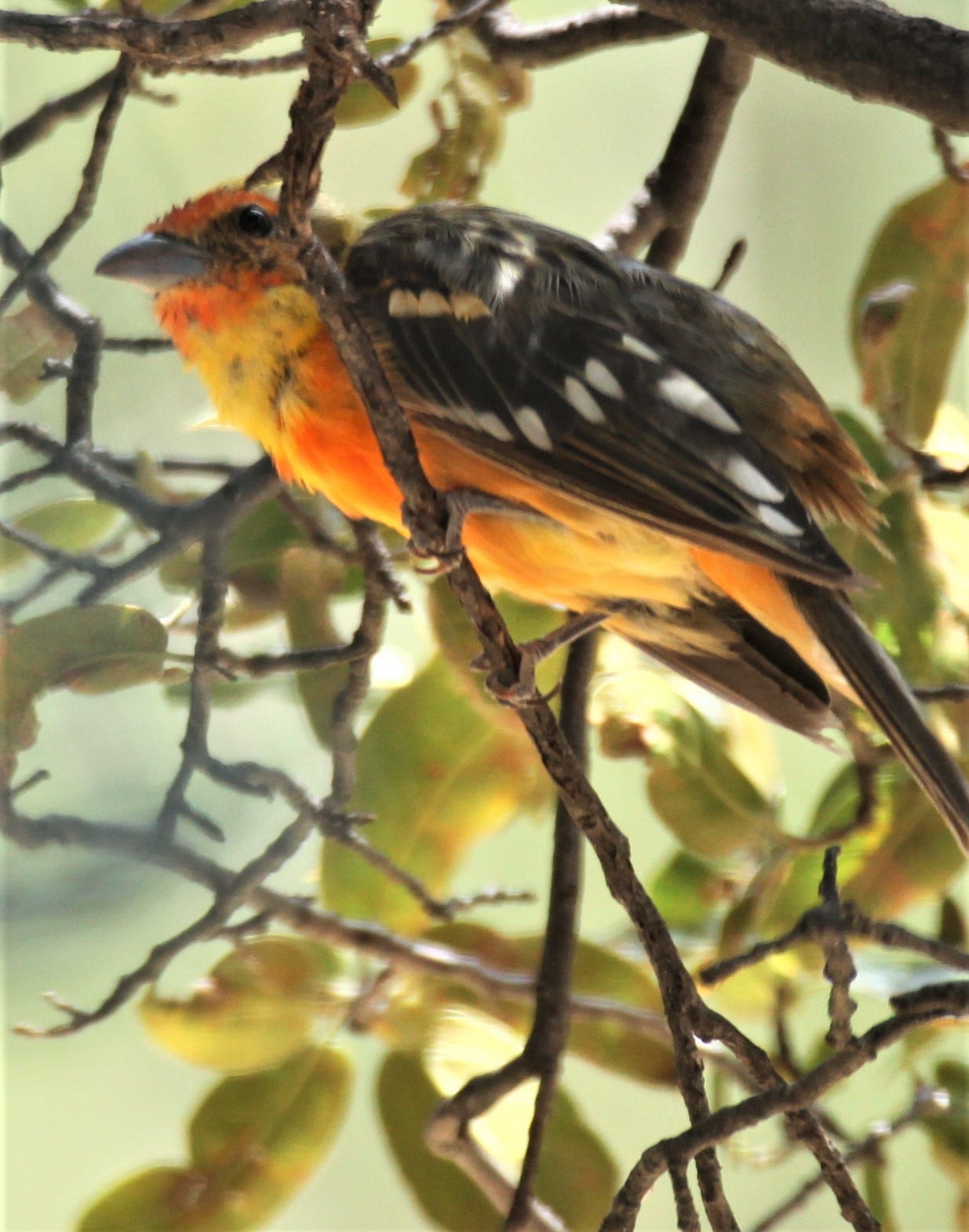
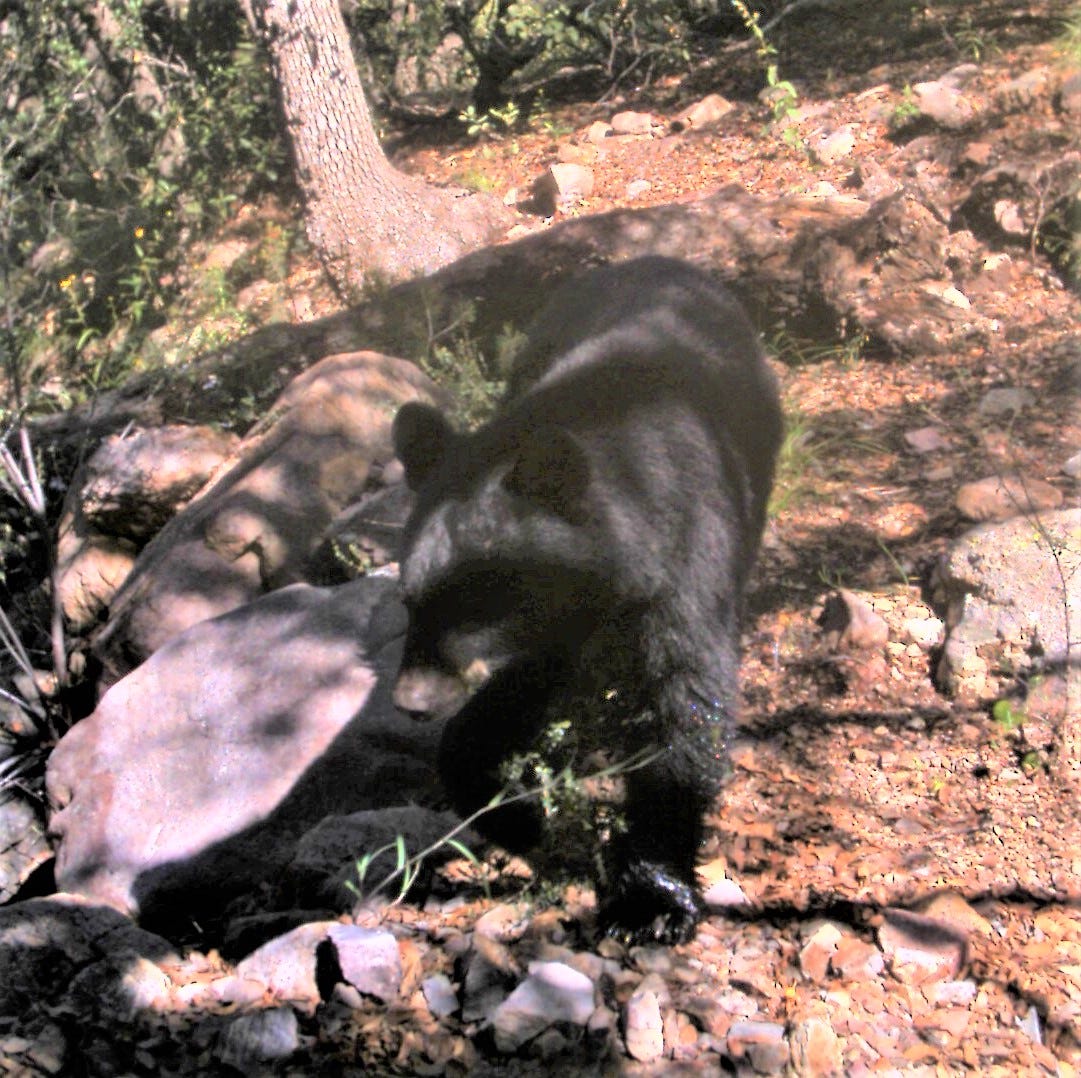
So awesome!
OMG, you are the Bird Whisperer!!